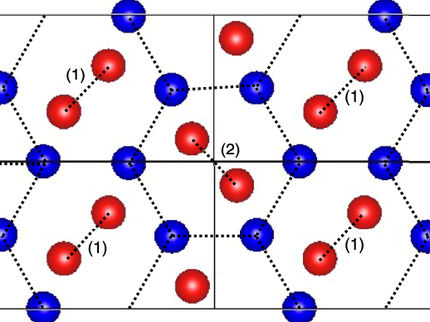Using supercomputers to explore nuclear energy
Advertisement
Ever wanted to see a nuclear reactor core in action? A new computer algorithm developed by researchers at the U.S. Department of Energy's (DOE) Argonne National Laboratory allows scientists to view nuclear fission in much finer detail than ever before. A team of nuclear engineers and computer scientists at Argonne National Laboratory are developing the neutron transport code UNIC, which enables researchers for the first time to obtain a highly detailed description of a nuclear reactor core.
The code could prove crucial in the development of nuclear reactors that are safe, affordable and environmentally friendly. To model the complex geometry of a reactor core requires billions of spatial elements, hundreds of angles and thousands of energy groups — all of which lead to problem sizes with quadrillions of possible solutions.
Such calculations exhaust computer memory of the largest machines, and therefore reactor modeling codes typically rely on various approximations. But approximations limit the predictive capability of computer simulations and leave considerable uncertainty in crucial reactor design and operational parameters.
"The UNIC code is intended to reduce the uncertainties and biases in reactor design calculations by progressively replacing existing multilevel averaging techniques with more direct solution methods based on explicit reactor geometries," said Andrew Siegel, a computational scientist at Argonne and leader of Argonne's reactor simulation group.
UNIC has run successfully at DOE leadership computing facilities, home to some of the world's fastest supercomputers, including the energy-efficient IBM Blue Gene/P at Argonne and the Cray XT5 at Oak Ridge National Laboratory. Although still under development, the code has already produced new scientific results.
In particular, the Argonne team has carried out highly detailed simulations of the Zero Power Reactor experiments on up to 163,840 processor cores of the Blue Gene/P and 222,912 processor cores of the Cray XT5, as well as on 294,912 processor cores of a Blue Gene/P at the Jülich Supercomputing Center in Germany. With UNIC, the researchers have successfully represented the details of the full reactor geometry for the first time and have been able to compare the results directly with the experimental data.
Most read news
Other news from the department science

Get the chemical industry in your inbox
By submitting this form you agree that LUMITOS AG will send you the newsletter(s) selected above by email. Your data will not be passed on to third parties. Your data will be stored and processed in accordance with our data protection regulations. LUMITOS may contact you by email for the purpose of advertising or market and opinion surveys. You can revoke your consent at any time without giving reasons to LUMITOS AG, Ernst-Augustin-Str. 2, 12489 Berlin, Germany or by e-mail at revoke@lumitos.com with effect for the future. In addition, each email contains a link to unsubscribe from the corresponding newsletter.































































